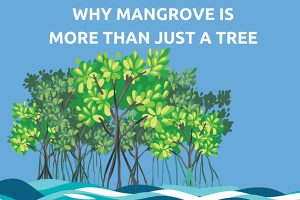When one attends a meeting about reforestation and conservation, it seems like Sierra Leone wants to become a world champion in planting trees. Everyone is planting trees. But how many of such trees do really survive and become fully grown trees? We know about stories that areas which were meant for reforestation are cleared again, and houses or roads are built on the same place where environmentalists had planted seedlings some months earlier.
The Conservation Society of Sierra Leone (CSSL) is not alone in the battle to protect the forest and reforest the hills around the Western Area Peninsula. We are not the only institution that is knowledgeable about the huge problem facing the sustainability of tree planting activities. One important part of our planning, when we organise tree planting activities, is the involvement of communities. This approach helps the Society to reinforce a sense of community ownership and reassurance of full responsibility to protect the trees. Monitoring and follow-up visits to the places where trees were previously planted also forms part of CSSL’s plans for its tree planting activities, as the first two years are very crucial for the survival of seedlings and new trees. Once they survive during this period, it is very likely that they will be strong enough to grow – provided they are not disturbed by human activities.
Marking this year’s World Environment Day, CSSL organised tree planting activities on the compounds of its School Nature Clubs and in one of its operational communities, Tombo in the Western Area Rural district. Three (3) months after the tree planting exercise, the Society began conducting the first follow-up visits to the sites, and is expected to continue through October. Tombo community was the first to be targeted, where community members had earlier raised the request for CSSL to support them with seedlings. Mariama Kargbo and Abdulai Dauda, CSSL’s Environmental Education Officer and Biodiversity Officer respectively, visited the site along with some community members. The seedlings were observed to be growing slowly. However, the team found a lot of elephant grass at the site which begs the need for CSSL to continue to provide support on how communities should handle the newly planted trees to enable them grow faster with less competition and disturbance.
Tree planting is not enough; it is very important to monitor seedlings and help them grow properly for sustainable reforestation. CSSL is here to support communities in their efforts to protect the environment and the source of their livelihood.
Abdulai Dauda, Assistant Biodiversity Manager



